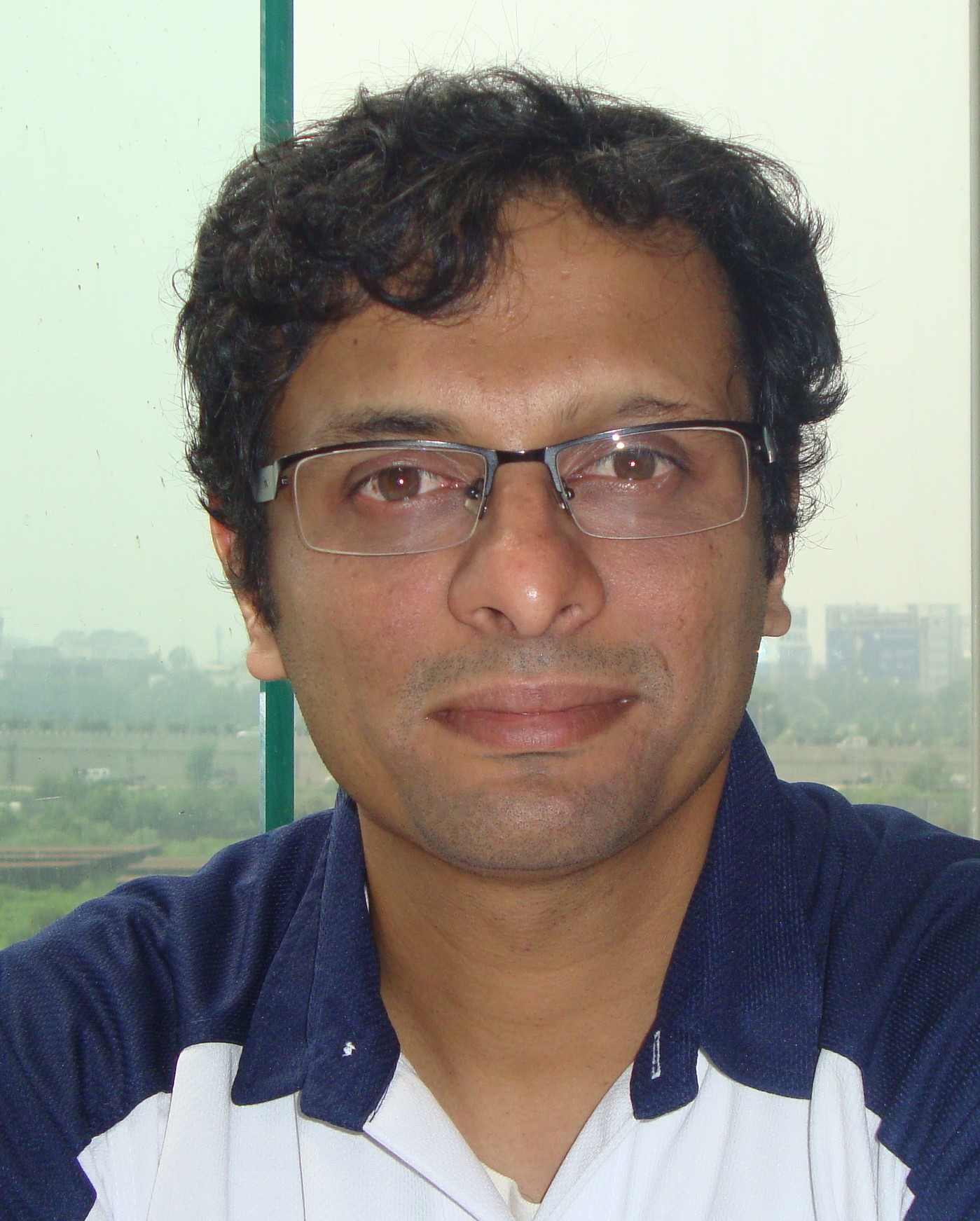Interview with Professor Chandra R. Murthy

Interview with Chandra R. Murthy, Professor, IISc Bangalore, India
 Chandra R. Murthy is a Professor in the department of Electrical Communication Engineering at the Indian Institute of Science, Bangalore, India. His research interests are in the areas of multiuser MIMO systems, 5G, and sparse signal recovery techniques applied to wireless communications. He has 60+ journal papers and 90+ conference papers to his credit. He was an associate editor for the IEEE Signal Processing Letters during 2012-16 and an elected member of the IEEE SPCOM Technical Committee during 2014-19. Currently, he is an associate editor for the IEEE Transactions on Signal Processing, IEEE Transactions on Information Theory, and IEEE Transactions on Communications.
Chandra R. Murthy is a Professor in the department of Electrical Communication Engineering at the Indian Institute of Science, Bangalore, India. His research interests are in the areas of multiuser MIMO systems, 5G, and sparse signal recovery techniques applied to wireless communications. He has 60+ journal papers and 90+ conference papers to his credit. He was an associate editor for the IEEE Signal Processing Letters during 2012-16 and an elected member of the IEEE SPCOM Technical Committee during 2014-19. Currently, he is an associate editor for the IEEE Transactions on Signal Processing, IEEE Transactions on Information Theory, and IEEE Transactions on Communications.
Q1. Please tell us a bit about your recent work in the area of signal processing.
Chandra: Sparse signal recovery, where the problem is to recover a sparse signal (i.e., one that has many zeros) from a set of underdetermined linear measurements, has been deeply investigated over the past decade. Sparse recovery techniques have also been applied to a variety of important problems in a myriad of applications. However, in practice, signals exhibit structure beyond sparsity. One of the key outcomes from my research group is that we have systematically developed a suite of Bayesian algorithms that can exploit any additional structure that is available, such as joint sparsity, block sparsity, intra- and inter- vector correlation. In particular, we have combined sparse signal recovery with Kalman filtering principles for exploiting temporal correlation in sparse vectors. We developed a fundamental understanding of the superior performance offered by Bayesian algorithms, which involves characterizing the restricted eigenvalue properties of the so-called Khatri-Rao products of random matrices. The analysis has led to the development of new, fastest-in-literature algorithms for Bayesian sparse signal recovery. These algorithms can solve million dimensional problems in a few minutes. Thus, our work makes significant progress towards overcoming two longstanding bottlenecks in the literature related to Bayesian sparse signal recovery: theoretical understanding of their superior performance, and ultra-low complexity algorithms for a gamut of important signal processing applications.
Sparse signal recovery has several important applications in physical layer communications, and we have demonstrated these in several papers on wideband wireless channel estimation. The algorithms for underwater acoustic channel estimation exploiting sparsity have been transferred to the Naval and Physical Oceanographic Laboratory, India. Further, in the context of cognitive radio, spectrum sensing necessitates the development of recovery algorithms for the so-called Boolean compressed sensing model. In these kinds of applications, the goal is not to recover the sparse vector, but rather to find a set of indices that lie outside its support. This led to the question of non-defective subset recovery, and we have deeply analyzed this question. Recently, we have been working on developing a theory of linear dynamical systems under sparsity constraints.
Our group has implemented these algorithms on hardware platforms and demonstrated their utility at national conferences (NCC, COMSNETS) and to the wireless industry. Currently, I am leading the 5G testbed at IISc, a large project involving 9 PIs and about 35 project staff. This is a project of national importance involving 7 IITs, SAMEER and CeWiT. The work at IISc focuses on developing algorithms for enhancing the performance at the physical layer, low latency packet management techniques for vehicle to infrastructure communications, mmWave hotspots, and visible light communications.
We have also worked on several problems in wireless communications. Briefly, these include a study of channel aging in massive multiple-input multiple-output communications, antenna selection techniques, energy harvesting (EH) communications, distributed cophasing based protocols for IoT applications, and multi-terminal information theory. In particular, the energy management protocols developed for EH communications are compatible with present-day low energy standards such as Bluetooth low energy. They have been demonstrated on hardware platforms and transferred to the aerospace industry (The Boeing Company).
Q2. What challenges do you think our current student population faces as far as preparedness for a career in signal processing related research and development is concerned?
Chandra: In my mind, this is an exciting time for the current generation of students. There are great opportunities and challenges. Opportunities in terms of having access to world-class materials for signal processing education through various online portals. Challenges in terms of having too many options to choose from, and inadequate access to information on what might be the most suitable. Signal processing is a very vast area, and one can work on interesting aspects on multiple levels. There is a need for exposing students to fundamental, key ideas and concepts that arise in signal processing, and enabling them to make choices that are right for them in terms of what to further specialize in. Another challenge I see is the lack of sufficient emphasis on fundamentals – instead, students tend to focus on internships and projects. While these may look good on a CV, it is a deep fundamental knowledge in signal processing that will really help in the long run. The latter, in turn, requires students to have the opportunity to learn from very high quality teachers. This is where the online courses can make a big difference. Like Ekalavya, students can learn from Gurus that they may never directly interact with.
Q3. In your opinion, what are some of the exciting areas of research in signal processing for students and researchers?
Chandra: Well, this is a tough question! Signal processing is too vast an area for any one person to give a comprehensive answer. Here, I will touch upon just a few points. First, a key question is how should one go about identifying a research topic or problem. My suggestion is to start by looking at articles in journals such as the IEEE Signal Processing Magazine. These articles are meant to be accessible to a wide audience, and further, many of these papers make it a point to indicate new and upcoming areas of research. They also contain plenty of good references for further reading. I recommend browsing through articles that appeared over the past several months, and diving deeper into any article that catches one’s eye. This, to me, is the best way to get started.
In terms of research topics, in 5G wireless communications, massive MIMO and millimetre wave communications have thrown up new signal processing challenges, which are being intensely researched these days. On the other hand, emerging areas such as cognitive neuroscience are very exciting for a signal processing engineer, as they use ideas from signal processing to understand how our brain works. A third topic that comes to mind is the intersection of “classical” signal processing with the more “modern” machine learning and artificial intelligence. What would be the role of signal processing in an era of deep learning? Can signal processing guide the design and architecture of deep learning based algorithms? Can deep learning inspire new theory and analysis in signal processing? There are many more exciting areas that promise to be very active in the coming years, but I’d like to close this short narrative by wishing all students and researchers the very best.

